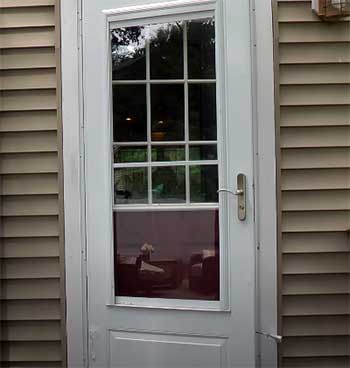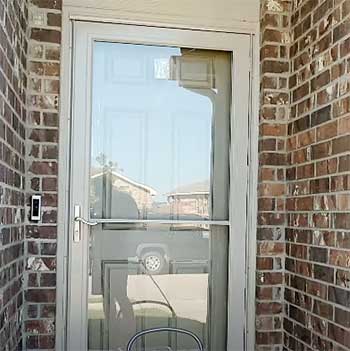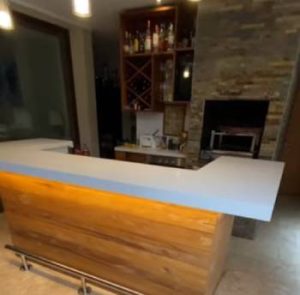As a homeowner, you may often find yourself contemplating on various home improvement projects. One such project that could make a significant difference in your home’s comfort, energy efficiency, and curb appeal is the installation of a storm door.
Storm doors not only protect your home from harsh weather but also provide extra insulation and ventilation. With several storm door options in the market, choosing the right one can be quite challenging.
This article will compare two popular storm door models from Andersen – the 2000 and the 3000 series – to help you make an informed decision.
A Brief Comparison Table
| Feature | Andersen 2000 Series | Andersen 3000 Series |
| Price | Affordable | Slightly more expensive |
| Customization | Limited | More options |
| Insect Screen | Manual, interchangeable | Retractable |
| Installation Ease | Straightforward | Slightly more complex |
| Advanced Features | Basic features | Dual-closing, keyed deadbolt |
A Quick Overview: Andersen 2000 And 3000 Storm Door
Before we delve into the details, let’s have a quick overview of these two storm door models from Andersen.
Andersen 2000 Series: The 2000 series storm door is a full view door with interchangeable glass and screen panels. This model is known for its affordability, durability, and straightforward installation process.
Andersen 3000 Series: The 3000 series is a self-storing storm door that comes with a retractable insect screen. It offers more advanced features and options, including various glass and hardware choices. The 3000 series is slightly more expensive than the 2000 series, but it is also more versatile and customizable.
Pros and Cons of Andersen 2000 Storm Door

Pros
- Affordability: The 2000 series storm door is an excellent choice for homeowners on a tight budget. It offers great value for its price, providing the essential features needed in a storm door without breaking the bank.
- Ease of Installation: Andersen’s 2000 series is designed for easy installation. With detailed instructions and user-friendly components, most homeowners can successfully install this door without professional help.
- Interchangeable Glass and Screen Panels: The 2000 series storm door comes with interchangeable glass and screen panels, allowing you to easily switch between full view glass and full view screen, depending on the season or your preferences.
Cons
- Limited Customization: The Andersen 2000 series storm door doesn’t offer as many customization options as the 3000 series. It has a limited range of colors, hardware choices, and glass designs.
- Manual Insect Screen: Unlike the 3000 series, which features a retractable insect screen, the 2000 series requires manual removal and installation of the screen panel, which can be cumbersome for some homeowners.
Also Read: Differences Between Andersen 8 Series And 3000 Series Storm Doors.
Pros and Cons of Andersen 3000 Storm Door

Pros
- Versatility and Customization: The 3000 series offers more options for customization, including various colors, hardware, and glass designs. This allows homeowners to tailor the storm door to match their home’s style and preferences.
- Retractable Insect Screen: One of the standout features of the Andersen 3000 series is its retractable insect screen. The screen smoothly rolls up and down, providing convenient insect protection without the need to swap panels.
- Advanced Features: The 3000 series storm doors come with advanced features, such as a dual-closing mechanism and a keyed deadbolt lock. These features enhance the door’s functionality and security.
Cons
- Higher Price: The 3000 series storm door is more expensive than the 2000 series, which may not be suitable for homeowners on a tight budget.
- Complex Installation: While the Andersen 3000 series storm door installation process isn’t overly complicated, it may require more time and patience compared to the 2000 series.
Making the Final Decision: Andersen 2000 And 3000 Storm Door
Now that we’ve discussed the pros and cons of Andersen 2000 and 3000 series storm doors, you may still be wondering which one is the best choice for your home. To make the final decision, consider the following factors:
- Budget: If you have a limited budget, the Andersen 2000 series may be the better option. It provides essential features and good quality at a more affordable price.
- Customization: If you want more options to customize your storm door to match your home’s style, the Andersen 3000 series offers a wider range of colors, hardware, and glass designs.
- Functionality: If you value conveniences, such as a retractable insect screen and advanced features like a dual-closing mechanism, the Andersen 3000 series may be worth the extra cost.
- Installation: If you plan to install the storm door yourself, consider the ease of installation. The Andersen 2000 series is known for its straightforward installation process, while the 3000 series may require more time and patience.
- Energy Efficiency: If energy efficiency is a top priority, the Andersen 3000 series may be a better choice due to its advanced features, such as the dual-layer weatherstripping system found in the 4000 series.
Also Read: Alternatives To Storm Door Chain.
Frequently Asked Questions (FAQ)
The best Andersen storm door depends on your needs and preferences. If you’re on a tight budget and prefer a simple, functional door, the 2000 series may be the best choice for you. However, if you’re looking for more customization options, advanced features, and a retractable insect screen, the 3000 series is worth considering.
The main differences between the 3000 and 4000 series storm doors are the level of customization and features available. The 4000 series offers even more options in terms of colors, hardware, and glass designs than the 3000 series. It also comes with additional features, such as a laminated safety glass and a dual-layer weatherstripping system for improved energy efficiency.
The most common storm door sizes are 32 inches and 36 inches wide. The height is usually 80 inches, which is considered the standard height for residential storm doors. However, storm doors can also be custom-ordered to fit non-standard door sizes.
The main differences between storm doors are in the materials used, features, and styles. Some storm doors are made of aluminum, while others are made of wood or vinyl. The features may include interchangeable glass and screen panels, retractable screens, or built-in blinds. Storm doors also come in various styles, such as full view, mid-view, or high view, depending on the amount of glass exposure.
Andersen and EMCO are both subsidiaries of Andersen Corporation, but they offer different product lines. Andersen focuses on higher-end storm doors with more features and customization options, while EMCO offers more budget-friendly storm doors with fewer features and options. Both brands provide quality products, but Andersen tends to be more popular among homeowners who want a more premium and customizable storm door.
Final Thoughts
In conclusion, both Andersen 2000 and 3000 series storm doors offer benefits to homeowners. Ultimately, your choice will depend on your budget, preferences, and the features you value most in a storm door. By considering the factors outlined above, you’ll be well-equipped to make the best decision for your home.
Don’t forget that a storm door is an investment in your home’s comfort, energy efficiency, and curb appeal. Whether you choose the Andersen 2000 or 3000 series storm door, you’ll be adding a valuable layer of protection and functionality to your home. Happy home improvement!



